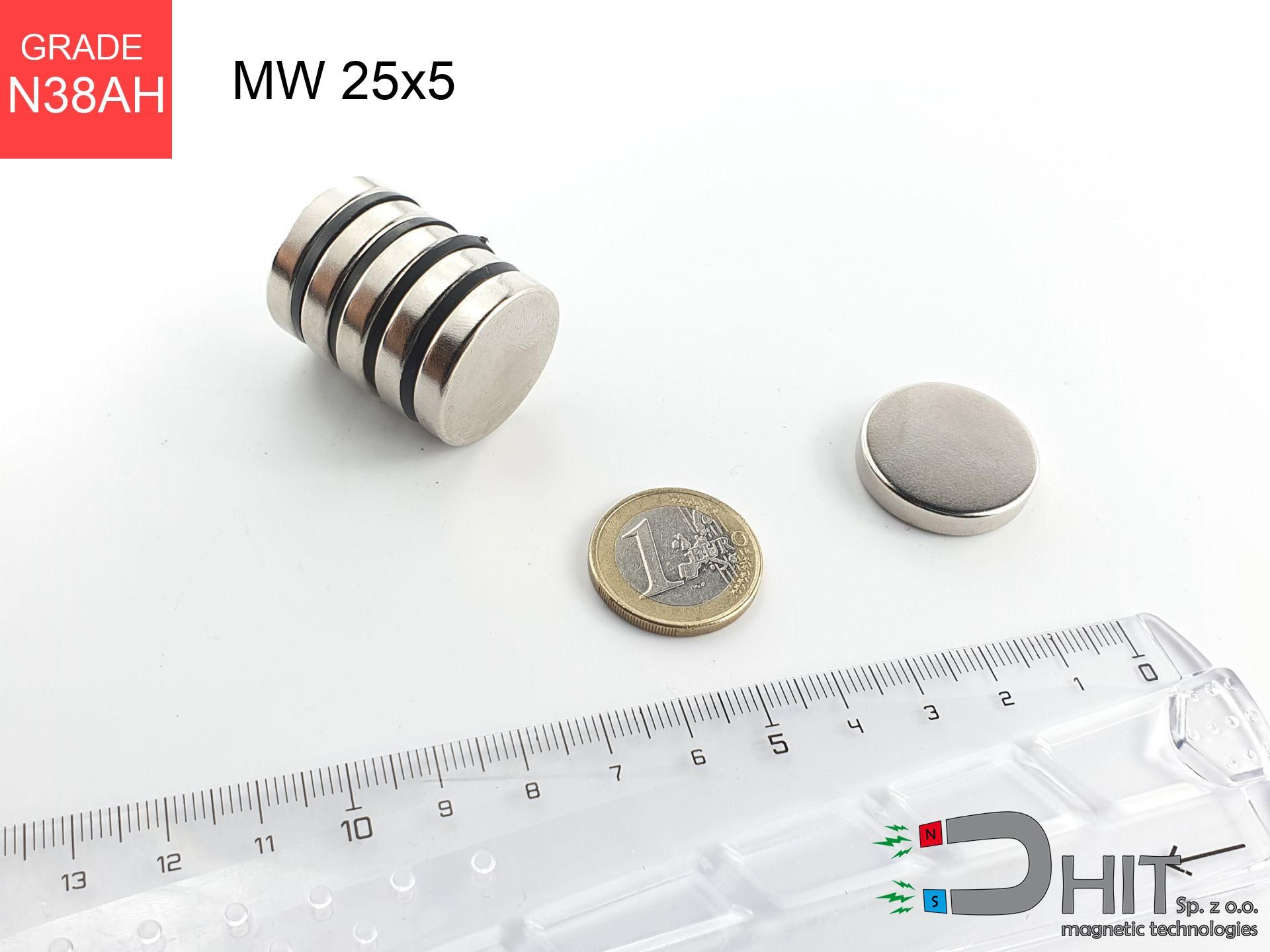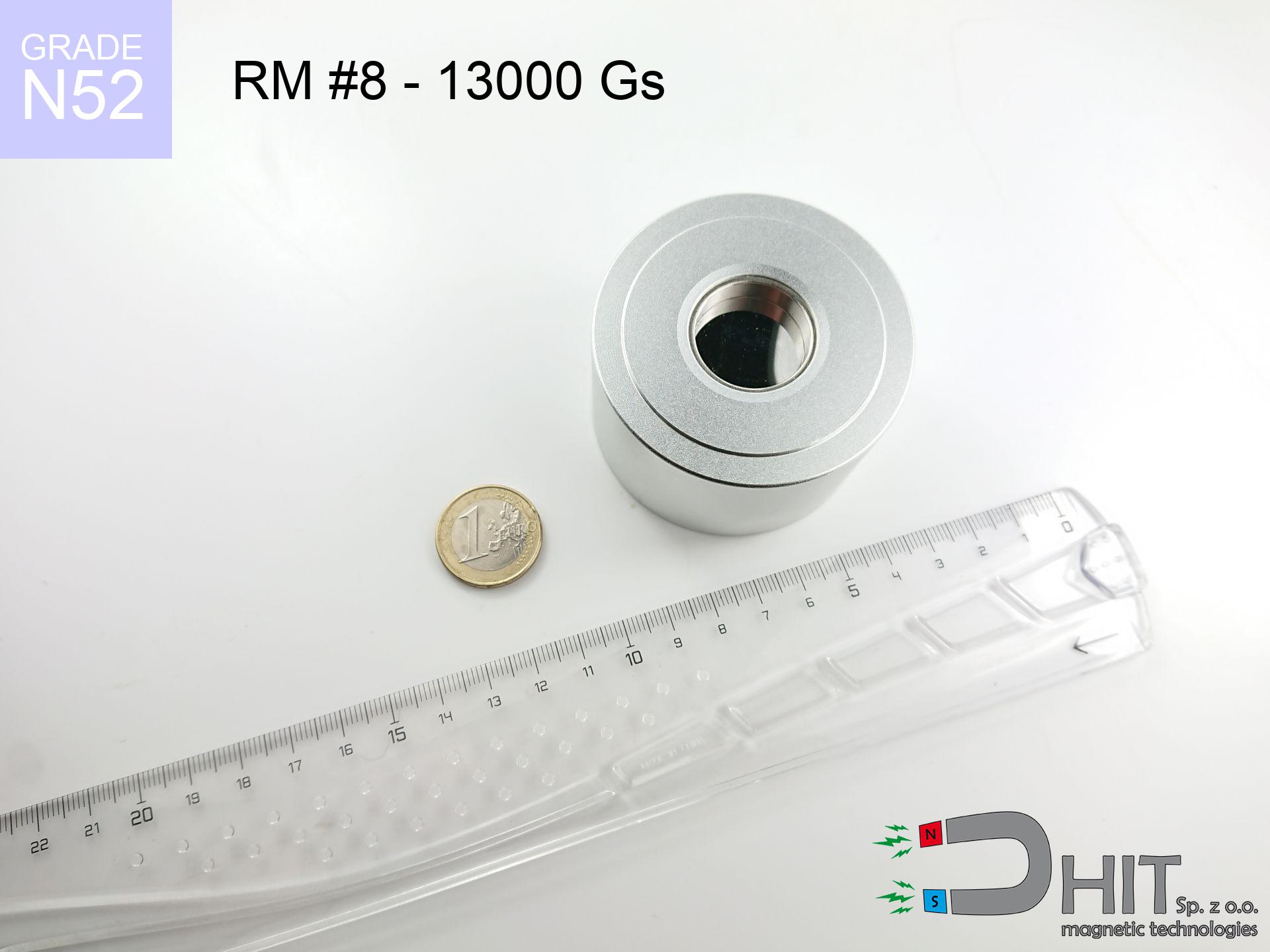SM 25x225 [2xM8] / N42 - magnetic separator
magnetic separator
Catalog no 130292
GTIN: 5906301812852
Diameter Ø
25 mm [±1 mm]
Height
225 mm [±1 mm]
Weight
0.01 g
Magnetic Flux
~ 6 500 Gauss [±5%]
615.00 ZŁ with VAT / pcs + price for transport
500.00 ZŁ net + 23% VAT / pcs
bulk discounts:
Need more?Can't decide what to choose?
Pick up the phone and ask
+48 888 99 98 98
otherwise contact us using
form
the contact section.
Lifting power and form of magnetic components can be reviewed with our
power calculator.
Order by 14:00 and we’ll ship today!
SM 25x225 [2xM8] / N42 - magnetic separator
Specification / characteristics SM 25x225 [2xM8] / N42 - magnetic separator
| properties | values |
|---|---|
| Cat. no. | 130292 |
| GTIN | 5906301812852 |
| Production/Distribution | Dhit sp. z o.o. |
| Country of origin | Poland / China / Germany |
| Customs code | 85059029 |
| Diameter Ø | 25 mm [±1 mm] |
| Height | 225 mm [±1 mm] |
| Weight | 0.01 g |
| Material Type | Stainless steel AISI 304 / A2 |
| Magnetic Flux | ~ 6 500 Gauss [±5%] |
| Size/Mount Quantity | 2xM8 |
| Polarity | circumferential - 8 poles |
| Casing Tube Thickness | 1 mm |
| Manufacturing Tolerance | ±1 mm |
Magnetic properties of material N42
| properties | values | units |
|---|---|---|
| remenance Br [Min. - Max.] ? | 12.9-13.2 | kGs |
| remenance Br [Min. - Max.] ? | 1290-1320 | T |
| coercivity bHc ? | 10.8-12.0 | kOe |
| coercivity bHc ? | 860-955 | kA/m |
| actual internal force iHc | ≥ 12 | kOe |
| actual internal force iHc | ≥ 955 | kA/m |
| energy density [Min. - Max.] ? | 40-42 | BH max MGOe |
| energy density [Min. - Max.] ? | 318-334 | BH max KJ/m |
| max. temperature ? | ≤ 80 | °C |
Physical properties of sintered neodymium magnets Nd2Fe14B at 20°C
| properties | values | units |
|---|---|---|
| Vickers hardness | ≥550 | Hv |
| Density | ≥7.4 | g/cm3 |
| Curie Temperature TC | 312 - 380 | °C |
| Curie Temperature TF | 593 - 716 | °F |
| Specific resistance | 150 | μΩ⋅Cm |
| Bending strength | 250 | Mpa |
| Compressive strength | 1000~1100 | Mpa |
| Thermal expansion parallel (∥) to orientation (M) | (3-4) x 106 | °C-1 |
| Thermal expansion perpendicular (⊥) to orientation (M) | -(1-3) x 10-6 | °C-1 |
| Young's modulus | 1.7 x 104 | kg/mm² |
See also products
Pros as well as cons of rare earth magnets.
In addition to their pulling strength, neodymium magnets provide the following advantages:
- They have stable power, and over more than ten years their performance decreases symbolically – ~1% (in testing),
- They are extremely resistant to demagnetization induced by external field influence,
- Thanks to the glossy finish, the surface of nickel, gold-plated, or silver-plated gives an visually attractive appearance,
- Magnets have extremely high magnetic induction on the outer side,
- Through (appropriate) combination of ingredients, they can achieve high thermal resistance, enabling operation at temperatures reaching 230°C and above...
- Thanks to modularity in shaping and the capacity to customize to unusual requirements,
- Versatile presence in high-tech industry – they are utilized in magnetic memories, motor assemblies, diagnostic systems, also modern systems.
- Compactness – despite small sizes they offer powerful magnetic field, making them ideal for precision applications
Disadvantages of NdFeB magnets:
- Brittleness is one of their disadvantages. Upon strong impact they can fracture. We advise keeping them in a strong case, which not only secures them against impacts but also increases their durability
- We warn that neodymium magnets can lose their power at high temperatures. To prevent this, we recommend our specialized [AH] magnets, which work effectively even at 230°C.
- They oxidize in a humid environment - during use outdoors we suggest using waterproof magnets e.g. in rubber, plastic
- Due to limitations in realizing threads and complicated forms in magnets, we recommend using cover - magnetic holder.
- Possible danger related to microscopic parts of magnets are risky, when accidentally swallowed, which gains importance in the context of child safety. Additionally, tiny parts of these products are able to disrupt the diagnostic process medical after entering the body.
- Higher cost of purchase is one of the disadvantages compared to ceramic magnets, especially in budget applications
Detachment force of the magnet in optimal conditions – what contributes to it?
The declared magnet strength refers to the limit force, recorded under laboratory conditions, specifically:
- with the contact of a yoke made of low-carbon steel, ensuring maximum field concentration
- with a cross-section of at least 10 mm
- with an ideally smooth contact surface
- under conditions of no distance (metal-to-metal)
- during detachment in a direction perpendicular to the plane
- at standard ambient temperature
Magnet lifting force in use – key factors
Effective lifting capacity is affected by working environment parameters, such as (from priority):
- Distance – existence of any layer (paint, dirt, air) acts as an insulator, which lowers power rapidly (even by 50% at 0.5 mm).
- Force direction – remember that the magnet has greatest strength perpendicularly. Under shear forces, the capacity drops significantly, often to levels of 20-30% of the maximum value.
- Plate thickness – too thin sheet does not accept the full field, causing part of the power to be wasted into the air.
- Steel grade – ideal substrate is pure iron steel. Cast iron may have worse magnetic properties.
- Base smoothness – the smoother and more polished the surface, the better the adhesion and stronger the hold. Roughness acts like micro-gaps.
- Thermal factor – hot environment weakens magnetic field. Exceeding the limit temperature can permanently demagnetize the magnet.
* Lifting capacity testing was performed on a smooth plate of suitable thickness, under perpendicular forces, however under parallel forces the load capacity is reduced by as much as fivefold. In addition, even a slight gap {between} the magnet and the plate decreases the lifting capacity.
Safe handling of neodymium magnets
Product not for children
Only for adults. Tiny parts can be swallowed, causing severe trauma. Store away from kids and pets.
Hand protection
Watch your fingers. Two large magnets will snap together instantly with a force of several hundred kilograms, destroying everything in their path. Be careful!
Do not underestimate power
Handle magnets consciously. Their huge power can surprise even professionals. Stay alert and do not underestimate their power.
Do not overheat magnets
Regular neodymium magnets (grade N) undergo demagnetization when the temperature surpasses 80°C. Damage is permanent.
Do not drill into magnets
Fire warning: Neodymium dust is highly flammable. Avoid machining magnets in home conditions as this may cause fire.
Protect data
Equipment safety: Strong magnets can ruin data carriers and sensitive devices (pacemakers, hearing aids, timepieces).
Medical implants
Individuals with a heart stimulator must maintain an safe separation from magnets. The magnetism can disrupt the functioning of the life-saving device.
Threat to navigation
GPS units and mobile phones are extremely susceptible to magnetism. Close proximity with a strong magnet can ruin the internal compass in your phone.
Beware of splinters
Protect your eyes. Magnets can fracture upon uncontrolled impact, launching sharp fragments into the air. We recommend safety glasses.
Nickel allergy
A percentage of the population suffer from a contact allergy to Ni, which is the typical protective layer for neodymium magnets. Prolonged contact may cause skin redness. We suggest wear safety gloves.
Caution!
Want to know more? Check our post: Why are neodymium magnets dangerous?

![Magnetic bar SM 25x225 [2xM8] / N42 Magnetic bar SM 25x225 [2xM8] / N42](https://cdn3.dhit.pl/graphics/banners/magnet.webp)
![SM 25x225 [2xM8] / N42 - magnetic separator](https://cdn3.dhit.pl/graphics/products/sm-25x225-2xm8-tix.jpg)

![UMP 135x40 [M10+M12] GW F 600 kg / N38 - search holder UMP 135x40 [M10+M12] GW F 600 kg / N38 - search holder](https://cdn3.dhit.pl/graphics/products/ump135x40-m10+m12-gw-f-600-kg-luz.jpg)



